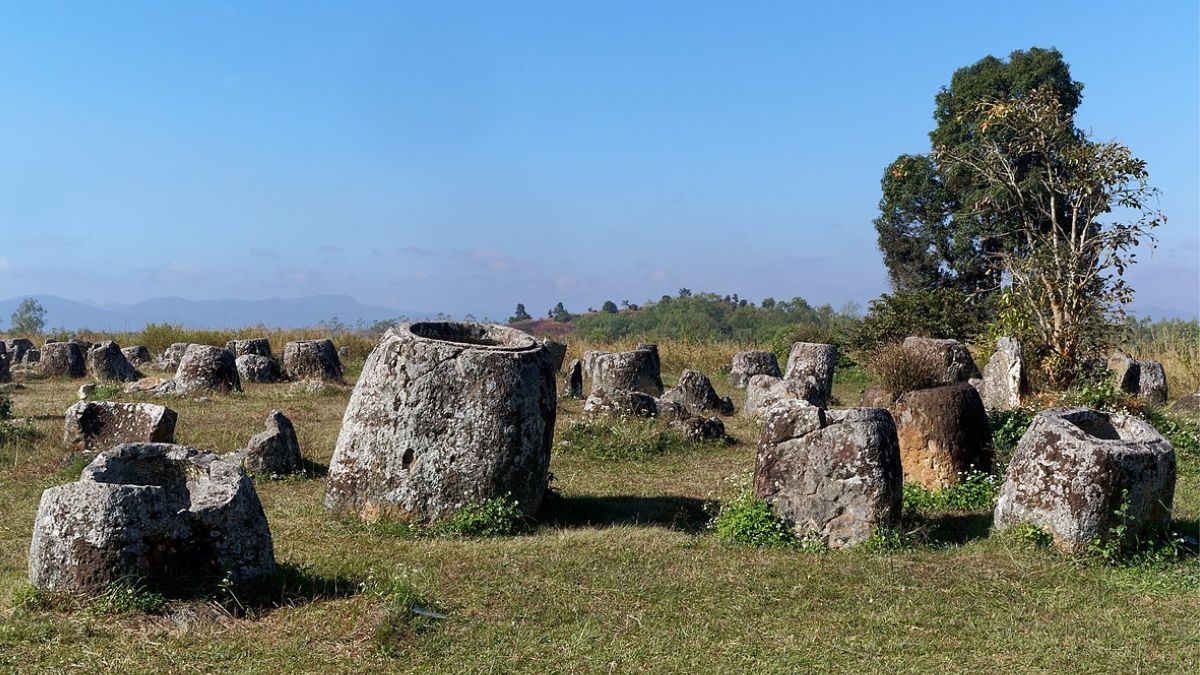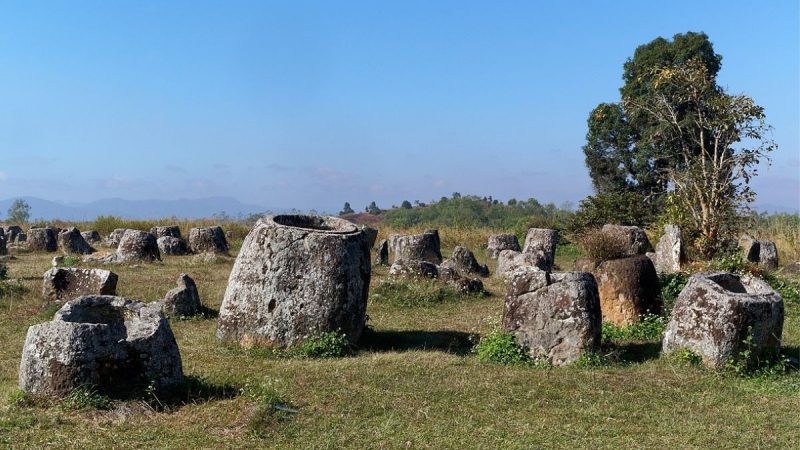Nestled amidst the serene landscapes of Laos lies a site shrouded in mystery and enchantment – the Plain of Jars. Thousands of enigmatic stone jars lie in ruin, thought to have originally held rice wine or human remains. More than 2,100 tubular-shaped megalithic stone jars used for burial rituals during the Iron Age gave rise to the Plain of Jars, a plateau in central Laos.
The Plain Of Jars In Laos
The #Ancient #mysteries that may never be Solved
What was the purpose of the Plain of Jars #Vietnam #Visit #travelling #sightseeing #Tourism #Travel #History #architecture #World pic.twitter.com/hfFynBfySF— CHAUDHRY IMRAN (@chimran55) May 2, 2021
The majority of the stone constructions are composed of sedimentary rock, and each one can weigh up to 14 tons and range in height from 3 to 10 feet. Although the jars’ exact origin is still unknown, archaeologists think they were first used somewhere between 1,500 and 2,000 years ago. Numerous academics say that the jars may have originally been used as food storage containers or funeral urns. The jars were made by Khun Cheung, an old giant ruler who resided in the highlands, according to a local Laotian mythology. It is reported that Cheung made the jars to brew massive amounts of celebratory lao lao rice wine following a successful battle.
Before French archaeologist Madeleine Colani started exploring the Plain of Jars in the 1930s, the region had gotten very little attention from the West. When Colani arrived, much of the valuables that had been reported in earlier accounts about the jars—including jewellery, axes, and carnelian beads—had already been taken. Nevertheless, Colani thought the jars were chieftain funeral urns after finding a nearby cave containing human remains, including ash and burnt bones.
Also Read: Vietnam Named The Top International Travel Destination Especially For Thai & Korean Travellers
Can They Be Visited?
Includes much discussion about
“The Plain of Jars” sites in Laos pic.twitter.com/WMFbpyVljy— Pre7777777 (@Pre477777774) April 13, 2024
The Plain of Jars saw intense American bombing in 1969 while serving as a major place of operations between the Royal Lao government and the North Vietnamese. There is currently a significant military airstrip in Laos there. Hence, only sites 1, 2, 3 and the quarry are open to visitors. All that is mostly left are spider webs and standing water—any clues to the riddle had long since vanished. We may have lost the chance to learn who constructed these wonders and why due to time and war.
In comparison to its neighbours in Southeast Asia, Thailand and Vietnam, Laos frequently feels disregarded. Even with treasures like the Unesco-listed northern city of Luang Prabang, many travellers find themselves engulfed in the boisterous celebration of Vang Vieng, a popular party destination.
Having the legacy of the past, looks like its secrets are preserved for generations to come!
Cover image credits: Wikimedia Commons
First Published: April 16, 2024 7:38 PM




